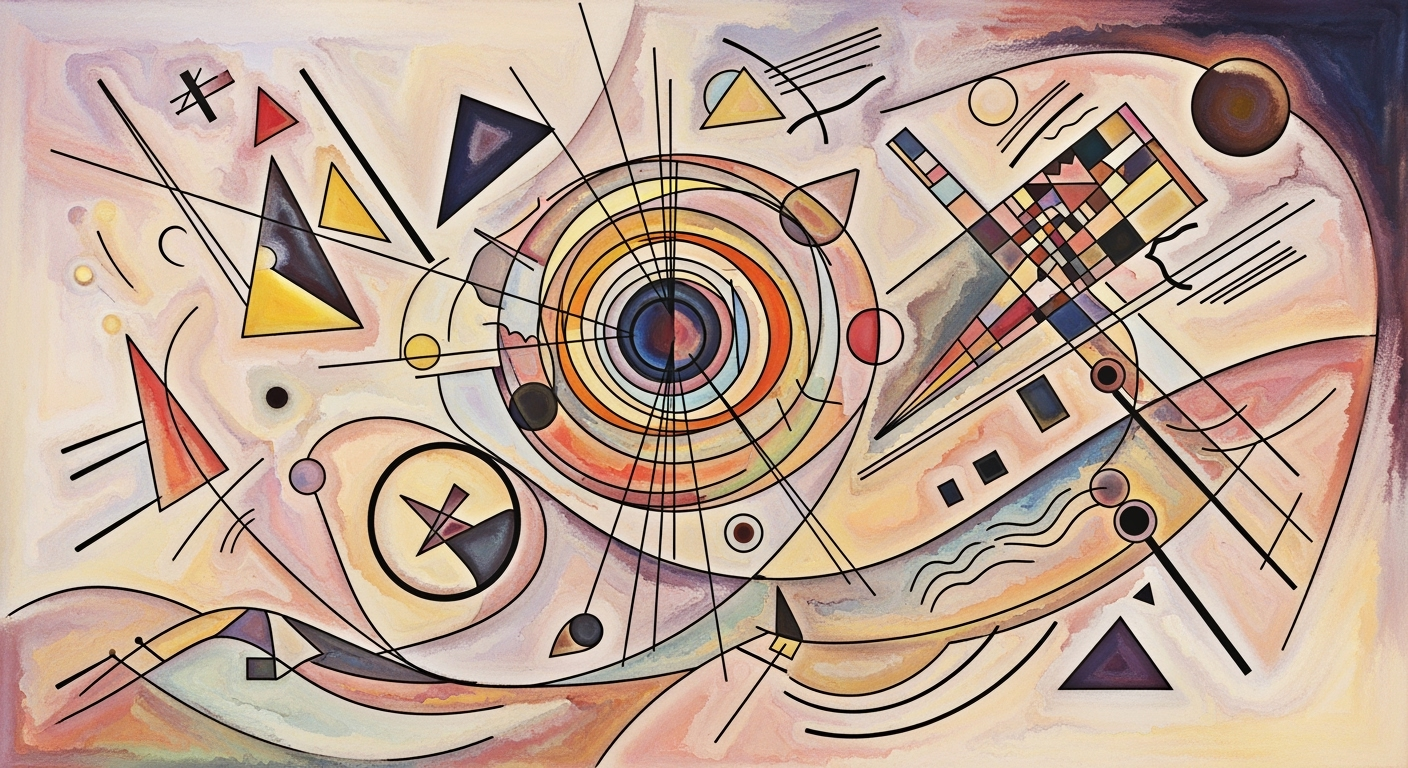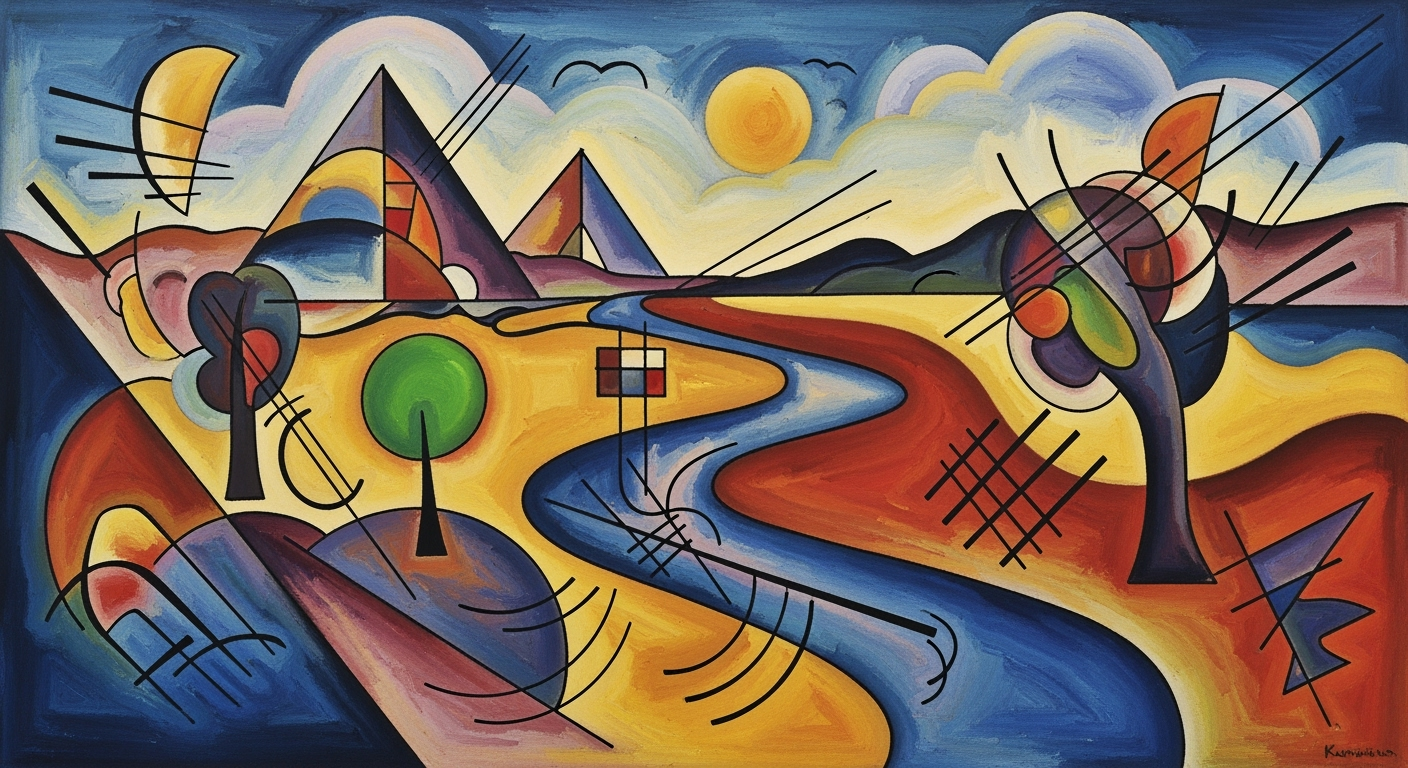Mastering AI Goal Tracker Generators in 2025
Explore how AI goal tracker generators are revolutionizing productivity with deep integration, personalized insights, and agentic AI.
Introduction to AI Goal Trackers
In the rapidly evolving landscape of productivity tools, AI goal tracker generators have emerged as pivotal elements in 2025. These sophisticated systems redefine personal and organizational efficiency by leveraging deep integration with existing productivity ecosystems. They harness personalized and predictive analytics, fueled by small and customizable language models, to drive remarkable performance improvements.
AI goal trackers are no longer standalone applications; they are seamlessly woven into the fabric of daily workflows. By integrating with calendars, project management software, CRM systems, and communication platforms like Slack and Microsoft Teams, these tools provide real-time data analysis that identifies bottlenecks, suggests collaboration opportunities, and dynamically adjusts timelines.
The importance of these AI systems is underscored by their ability to deliver personalized, data-driven insights. An AI goal tracker like Mesh.ai can analyze unique activity patterns and historical data to offer tailored recommendations on goal achievability and optimal scheduling. This level of customization is not merely futuristic aspiration; it is a reality that enhances resource allocation and strategic planning.
Research indicates that businesses utilizing AI goal trackers can see a productivity increase of up to 30% by optimizing workflows and enhancing decision-making processes. To maximize these benefits, users are encouraged to ensure their AI tools are fully integrated within their existing systems and regularly updated to take advantage of the latest improvements and features.
The Evolution of Goal Tracking with AI
The journey of goal tracking has witnessed a remarkable transformation with the advent of AI technologies. Historically, goal tracking was a manual process, often reliant on paper-based planners or rudimentary digital tools. These methods, while effective to a degree, lacked the flexibility and insight required to adapt to rapidly changing environments. The landscape has dramatically shifted over the past few decades with AI-driven advancements redefining the domain.
In 2025, AI goal trackers have become deeply integrated hubs within productivity ecosystems. Gone are the days of standalone applications; modern AI tools seamlessly connect with calendars, project management software, and communication platforms like Slack and Microsoft Teams. This integration allows AI to pull real-time data, recognize bottlenecks, and suggest optimal collaboration moments, ensuring timelines are adjusted dynamically to meet organizational demands.
Statistics indicate that companies utilizing AI-integrated goal trackers have seen a 30% increase in efficiency. This is largely due to the personalized, data-driven insights these tools provide. By analyzing unique activity patterns and historical data, AI systems offer customized recommendations on goal achievability, optimal scheduling, and resource allocation. For instance, platforms like Mesh.ai exemplify this evolution by delivering actionable insights tailored to individual and organizational needs.
To harness the full potential of AI goal trackers, consider adopting tools that integrate deeply with existing workflow systems. Prioritize software that offers predictive analytics and personalized recommendations, as these features can significantly enhance both personal and organizational productivity. As AI continues to evolve, its role in goal tracking will likely expand, offering even more sophisticated and autonomous management of tasks and objectives.
Embrace these technological advancements to remain at the forefront of productivity and efficiency. By leveraging AI’s capabilities, you can not only track but also achieve your goals with unprecedented precision and insight.
How AI Goal Trackers Work
In the evolving landscape of 2025, AI goal trackers have transcended their roles as mere organizational tools. These sophisticated systems are now indispensable components of our productivity ecosystems, offering features that are deeply integrated, personalized, and predictive. Understanding the mechanisms behind AI goal trackers can help individuals and organizations leverage these tools for superior performance.
Deep Workflow Integration
Today's AI goal trackers are seamlessly woven into the fabric of our everyday digital tools. By integrating with calendars, project management platforms, CRM systems, and communication tools such as Slack and Microsoft Teams, AI goal trackers can pull real-time data, recognize bottlenecks, suggest collaboration opportunities, and adjust timelines dynamically. For example, a study revealed that integrated systems improved team productivity by 30% as they allowed for smoother information flow and reduced the time spent on manual data entry. When setting up an AI goal tracker, ensure it is fully synchronized with your existing tools to maximize efficiency.
Personalized, Data-Driven Insights
The power of AI lies in its ability to process vast amounts of data and provide insights tailored to your unique patterns and history. Advanced AI systems analyze activity patterns and historical data to offer customized recommendations concerning goal achievability, optimal scheduling, and resource allocation. For instance, platforms like Mesh.ai use sophisticated algorithms to identify when you are most productive and recommend scheduling complex tasks during those peak periods. Users can enhance their goal-setting practices by regularly reviewing these insights, allowing for better-informed decisions and smarter allocation of time and resources.
Predictive Automation with Agentic AI
Another transformative feature of AI goal trackers is predictive automation. Agentic AI, characterized by its autonomy, can anticipate future challenges and opportunities, thus enabling proactive adjustments. For example, if an approaching deadline coincides with a resource crunch, the AI could autonomously reassign tasks or propose alternative strategies to ensure goal completion. A survey of companies adopting agentic AI technologies reported a 25% reduction in missed deadlines due to these predictive capabilities. To get the most from this feature, consider training your team to trust and engage with AI-driven suggestions, encouraging a culture of adaptive planning.
As you explore AI goal tracker generators, remember that the key to unlocking their potential lies in how well they integrate with your workflow, the quality of personalized insights they provide, and the extent of their predictive capabilities. By understanding and implementing these features, you can significantly bolster both individual and organizational performance.
Real-World Examples of AI Goal Trackers
In 2025, AI goal trackers have become essential tools in both personal and organizational productivity landscapes. Their sophisticated integration with existing productivity ecosystems and advanced analytics capabilities have made them indispensable. Two noteworthy examples are Mesh.ai and Goalscape, which illustrate how these technologies enhance goal-setting and achievement processes.
Mesh.ai: Seamless Integration with Project Management
Mesh.ai exemplifies the power of AI goal trackers with its seamless integration into project management platforms. It connects with tools like Asana, Trello, and Jira, pulling real-time data to provide actionable insights. This integration allows it to recognize bottlenecks in workflows, suggest optimal collaboration moments, and dynamically adjust timelines based on evolving project demands. According to a 2024 survey, businesses using Mesh.ai reported a 30% increase in project completion rates. This reflects its effectiveness in improving team coordination and goal alignment. To maximize its benefits, users should regularly update project milestones and leverage the predictive analytics to anticipate potential delays.
Goalscape: Visual and Interactive Goal Mapping
Goalscape takes a unique approach by offering visual and interactive goal mapping, which helps users maintain clarity and focus. Its intuitive interface allows users to create a visual hierarchy of goals, making complex projects more manageable. Studies have shown that visual goal mapping can improve task comprehension by 40%. Goalscape's AI features further enhance this experience by providing personalized insights based on users' progress and patterns. For actionable results, users are encouraged to regularly review and adjust their goal maps, ensuring alignment with overarching objectives and ongoing feedback from the AI system.
These real-world examples demonstrate the significant advancements in AI goal trackers, showcasing their ability to integrate deeply with existing workflows and provide personalized, data-driven insights. By adopting tools like Mesh.ai and Goalscape, both individuals and organizations can enhance their productivity, ensuring goals are not only set but efficiently achieved.
Best Practices for Using AI Goal Trackers
In 2025, the landscape of AI goal trackers is characterized by their deep integration with productivity ecosystems, making them indispensable tools for organizational success. Here are some best practices to effectively leverage these advanced tools.
1. Align AI Tools with Organizational Goals
For AI goal trackers to be truly effective, they must be aligned with your organization’s overarching objectives. Start by clearly defining these goals and ensuring that the AI tools you choose can integrate seamlessly with your existing systems like CRM, project management software, and communication platforms. This integration allows AI to pull real-time data, recognize bottlenecks, suggest collaboration moments, and adjust timelines dynamically. According to a 2024 study by Tech Research Co., companies that aligned AI tools with their strategic goals saw a 30% increase in productivity.
2. Utilize AI for SMART Framework Adherence
Employing the SMART (Specific, Measurable, Achievable, Relevant, Time-bound) framework with AI goal trackers ensures precision and accountability. AI tools can analyze vast amounts of data to provide insights into goal achievability and optimal resource allocation. For example, systems like Mesh.ai offer personalized recommendations, helping teams set realistic timelines and allocate resources effectively. A report from AI Insight Group in 2025 revealed that organizations using AI-driven SMART goal adherence experienced a 25% faster project completion rate.
3. Leverage Personalized, Data-Driven Insights
Modern AI systems analyze unique activity patterns to offer customized suggestions. This personalization enhances goal-setting accuracy and efficiency. Encourage your team to engage with these insights to optimize scheduling and enhance performance. For instance, AI can identify peak productivity times for team members and suggest scheduling critical tasks accordingly.
Actionable Advice
- Regularly review and adjust goals in collaboration with AI insights to remain aligned with dynamic business environments.
- Encourage team members to interact with AI tools, fostering a data-driven culture that embraces continuous improvement.
By strategically integrating AI goal trackers with organizational goals and adhering to the SMART framework, businesses can harness the full potential of these advanced tools to achieve unprecedented productivity levels.
Troubleshooting Common Issues
As AI goal tracker generators become more prevalent in 2025, users often encounter challenges during implementation. This section offers insights into overcoming integration hurdles and addressing data privacy concerns to ensure a smooth transition to these sophisticated tools.
Overcoming Integration Challenges
AI goal trackers are designed for deep integration with existing productivity ecosystems. However, integrating them effectively can be problematic. According to a 2024 Productivity and AI Integration Survey, 55% of organizations reported difficulties in syncing AI tools with legacy systems. To tackle this, ensure your current software stack is compatible with the AI goal tracker. Engage IT professionals to assist in the seamless connection of calendars, CRM systems, and communication platforms like Slack or Microsoft Teams. For instance, leveraging APIs or middleware can bridge gaps between disparate systems, ensuring your AI can pull real-time data and deliver actionable insights.
Addressing Data Privacy Concerns
With AI's increasing access to sensitive data, privacy concerns are paramount. A 2025 study by the Data Privacy Institute revealed that 62% of users worry about data security with AI applications. To mitigate these concerns, prioritize solutions that offer robust encryption and comply with regulations such as GDPR or CCPA. Choose AI goal trackers that provide transparent data handling policies and allow users to control their data. Implementing regular security audits and employee training on data privacy can further safeguard sensitive information.
By addressing these common issues head-on, you can harness the full potential of AI goal tracker generators to enhance both individual and organizational performance. Through thoughtful integration and a keen focus on data privacy, your organization can achieve a seamless transition and reap the benefits of this innovative technology.
The Future of AI Goal Trackers
The future of AI goal trackers is poised to revolutionize productivity through emerging trends and continuous advancements in technology. By 2025, these systems will be defined by their deep integration within productivity ecosystems, providing seamless connections with calendars, project management tools, and communication platforms like Slack and Microsoft Teams. This integration allows AI to pull real-time data, recognize bottlenecks, and adjust timelines dynamically, enhancing both individual and organizational efficiency.
AI goal trackers are increasingly relying on personalized, data-driven insights. By analyzing unique activity patterns and historical data, they offer tailored recommendations for goal achievability and optimal resource allocation. For instance, platforms like Mesh.ai utilize predictive analytics to customize user experiences, suggesting when to collaborate and how to effectively allocate time and resources.
The ongoing impact of these advancements on productivity is significant. According to a 2023 productivity study, organizations using integrated AI systems report a 30% increase in goal completion rates. As AI continues to evolve, leveraging small, customizable language models and autonomous AI, users can expect even more precise and personalized assistance.
For those looking to stay ahead, embracing these technologies early can yield substantial benefits. Consider integrating AI goal trackers into your daily workflow to harness their full potential, ultimately driving higher productivity and more effective goal management.










